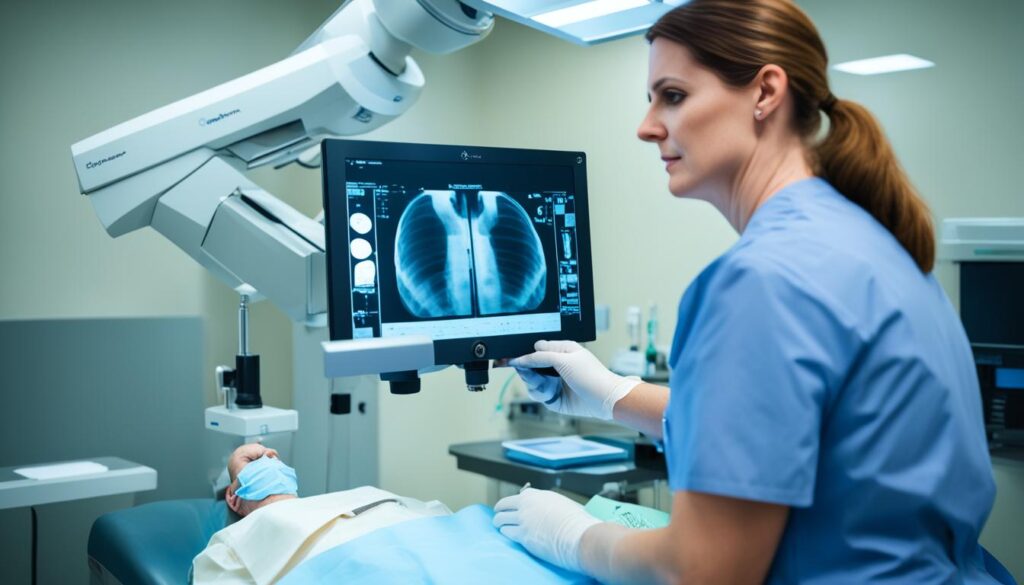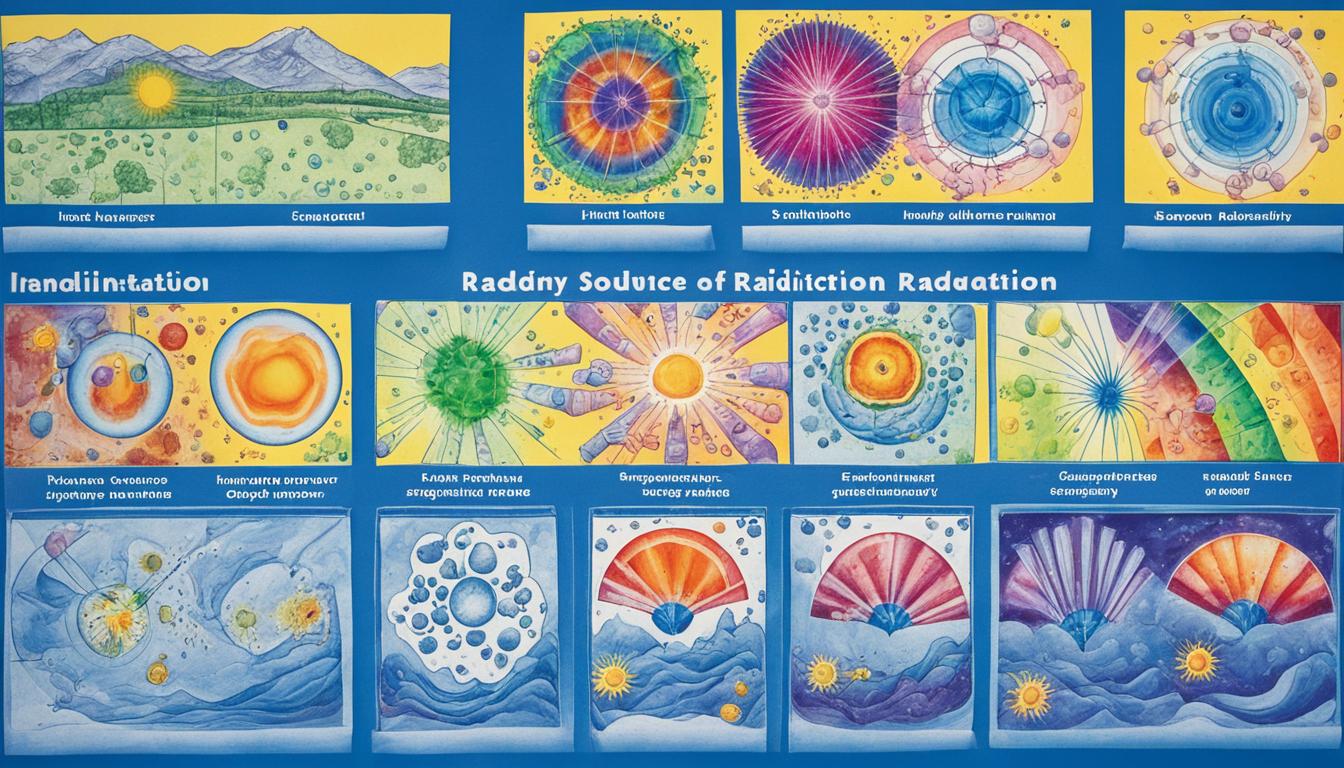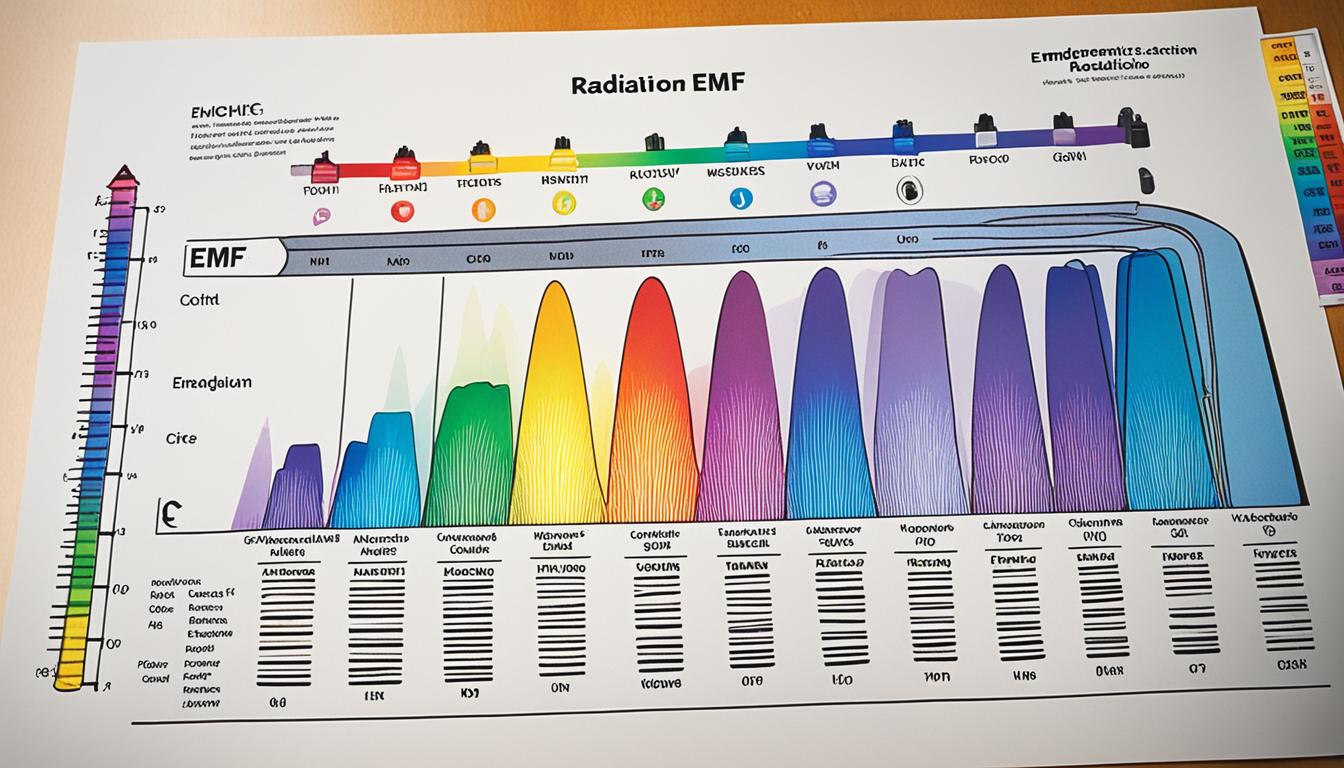Disclosure: This Post Contains Affiliate Links; We earn a commission on purchases.
When we speak about radiation, it’s essential to distinguish between the two main categories that can have different impacts on our health: ionizing and non-ionizing radiation. Ionizing radiation is characterized by its ability to penetrate deep into the human body, potentially causing changes at the molecular level, which includes DNA and protein damage. This type of radiation is emitted from various sources including medical imaging devices, naturally occurring elements, and even household radon gas.
Conversely, non-ionizing radiation tends to have larger wavelengths and lower energy, often resulting in less severe biological effects, such as thermal damage to the tissues due to heat. Common sources of non-ionizing radiation include household appliances, mobile phones, and certain industrial machinery. The key is understanding the intensity and duration of exposure to gauge the potential health risks.
Key Takeaways
- The distinction between ionizing and non-ionizing radiation hinges on their energy levels and how they interact with living tissues.
- Ionizing radiation sources include both natural and manmade elements, with radon and medical diagnostics being prominent contributors.
- Non-ionizing radiation sources are present in everyday life, from the cell phones we use to the microwaves that heat our food.
- The health effects of radiation exposure can vary greatly, with ionizing radiation posing higher risks due to its higher energy and penetrative ability.
- Understanding and mitigating potential radiation exposure starts with distinguishing between the radiation types and their respective sources.
Introduction to Radiation Types and Their Significance
Radiation surrounds us – from the ground we walk on to the gadgets we use and the medical procedures we undergo. It exists in various forms and frequencies, each with its own set of characteristics and implications for our health and daily life. Understanding the significance of different radiation types, especially the electromagnetic spectrum, and grasping the difference between ionizing and non-ionizing radiation is crucial for informed decisions about safety and health.
Defining Radiation and Its Relevance to Daily Life
Radiation can be thought of as energy that travels through space or a medium, taking on different forms. These forms vary widely, from the visible light enabling us to see the world around us, to the radio waves that carry our favorite music, to the more penetrating x-rays that peer into the body’s interior. Our daily life intersects with radiation more often than we might realize, making a basic understanding of its nature not just scientifically interesting, but practically important.
The Electromagnetic Spectrum Overview
The electromagnetic spectrum is the representation of the entire range of radiation’s wavelengths and frequencies – from the longest radio waves to the shortest gamma rays. Within this spectrum lies an invisible boundary that separates ionizing from non-ionizing radiation, hinging upon the energy they carry. This boundary is not just scientific trivia; it indicates the potential for different types of radiation to impact matter, especially living tissue, in vastly different ways.
Key Distinctions Between Ionizing and Non-Ionizing Radiation
At the heart of understanding radiation’s impact on health is the distinction between ionizing and non-ionizing forms. Ionizing radiation is notable for its higher energy levels that have the capability to displace electrons from atoms, effectively ionizing them. This process can lead to molecular damage if the living tissue is the recipient of this energy transfer. On the flip side, non-ionizing radiation typically does not carry enough energy to ionize but can still pose risks, such as thermal damage due to excessive heat upon intense exposure. This fundamental difference dictates how we approach protection and safety in environments where radiation is present.
In summary, while both types of radiation are part of our world’s natural and manmade environment, they interact differently with our bodies. Understanding these interactions is key to navigating a world where radiation is a constant, albeit often invisible, companion.
The Nature and Sources of Ionizing Radiation
Ionizing radiation is an ubiquitous yet often misunderstood component of our environment. It arises from a range of natural sources and manmade sources, each with varying impacts on human health. Understanding the origins and types of ionizing radiation is the first step in appreciating its significance and managing its presence in our lives.
Natural sources of ionizing radiation, while typically presenting lower levels of radiation, are integral to the earth’s makeup. For instance, our bodies contain minute traces of radioactive potassium. However, particular attention must be given to radon, a colorless and odorless gas emanating from rock formations and soils. It holds the notoriety of being the second leading cause of lung cancer in the United States, highlighting the importance of awareness and testing in areas prone to higher radon levels.
On the other hand, manmade sources are predominantly linked with the healthcare industry through medical diagnostic exams. These examinations incorporate various imaging technologies, such as X-rays, crucial in modern medicine for diagnosing a plethora of health conditions. While they involve exposure to ionizing radiation, the protocols are carefully designed so that the health benefits greatly exceed the associated exposure risks.
Advancements in medical imaging have also paved the way for alternatives such as Magnetic Resonance Imaging (MRIs) and ultrasound, which do not utilize ionizing radiation, thus providing options for patients and professionals concerned with minimizing unnecessary exposure.

The following table delineates the predominant natural and manmade ionizing radiation sources and their characteristics:
| Natural Sources | Characteristics | Health Implications |
|---|---|---|
| Radioactive Elements in the Body (e.g., potassium) | Low levels of radiation | Generally harmless due to minimal exposure |
| Radon Gas | Can accumulate in buildings, varying levels based on geology | Increased risk of lung cancer with higher exposure |
| Manmade Sources | Characteristics | Health Implications |
| Medical Diagnostic Exams (e.g., X-rays) | Controlled exposure, health-oriented purpose | Benefit outweighs risk with proper use and protocols |
| Alternative Diagnostic Methods (MRIs, Ultrasounds) | No ionizing radiation involved | No radiation exposure, suitable for frequent or sensitive use |
As we continue to navigate a world replete with various forms of radiation, understanding these sources and their implications is paramount. By doing so, we can better gauge exposure risks and make informed decisions for our health and wellbeing.
Ionizing vs. Non-Ionizing Radiation: Differences in Biological Impact
Delving into the intricate world of radiation reveals critical differences in how ionizing and non-ionizing radiation interact with human health. While the conversation frequently centers on radiation’s potential dangers, it is the biological impact and the intricacies of tissue interaction that sharpen our understanding of these invisible forces. Below, we assess the contrasting effects of these radiant energies and their distinct pathways through which they may cause harm to organic tissues.
Ionizing Radiation: Penetration and Absorption in Tissues
Ionizing radiation represents a potent form of energy capable of penetrating deeply into tissues, disrupting cellular integrity, and potentially leading to severe health consequences, including cancer. The energy from this type of radiation can be absorbed by the body’s tissues, resulting in ionization—the process where electrons are stripped away from atoms creating charged ions. The repercussions of this process can be extensive, instigating a cascade of cellular abnormalities and genetic damages that underscore the critical nature of appropriately managing and limiting exposure.
Effects of Non-Ionizing Radiation on Human Health
In contrast to its ionizing counterpart, non-ionizing radiation encompasses a wide range of lower-frequency radiation types such as ultraviolet light, microwaves, and radio frequencies. Daily exposure to non-ionizing radiation sources like mobile phones, Wi-Fi, and microwaves is an inextricable component of modern living. While generally regarded as less detrimental than ionizing radiation, certain conditions of exposure—predominantly intense and direct contact—can induce tissue damage predominantly via thermal effects. This underscores the necessity of exercising caution even with these seemingly benign forms of radiation in both personal and occupational settings.
Understanding the Relationship between Radiation Intensity and Potential Harm
Radiation’s capacity to harm biological systems is intimately linked to its intensity and the exposed individual’s duration of contact. At its core, this relationship determines the potential risk associated with radiation exposure. While lower levels of both ionizing and non-ionizing radiation may pose minimal health risks, heightened exposure can lead to pathophysiological conditions. Hence, the quantification and control of radiation intensity become instrumental in safeguarding against the spectrum of radiation health effects—from the most benign to the potentially lethal.

Understanding these disparities in radiation exposure is pivotal for establishing protective measures that mitigate the biological impact on human health. This awareness enables individuals, healthcare professionals, and industry workers to better navigate environments where the presence of both ionizing and non-ionizing radiation is a reality of everyday life.
Everyday Encounters with Non-Ionizing Radiation Sources
Non-ionizing radiation is pervasive in our daily lives, surrounding us through various mediums in both domestic and professional environments. The awareness of these interactions is crucial for maintaining a balance between the convenience of modern technology and the health implications associated with exposure to non-ionizing radiation sources.
Common Appliances and Devices Emitting Non-Ionizing Radiation
In the comfort of our homes and workplaces, non-ionizing radiation is emitted by a myriad of appliances and devices integral to our day-to-day activities. Familiar objects like cell phones, Wi-Fi routers, and microwave ovens operate with levels of non-ionizing radiation considered safe for general use. Similarly, remote controls, laptops, and various wireless devices contribute to the unseen spectrum of radiation that we continuously interact with.
Recognizing Non-Ionizing Radiation in Professional Environments
Beyond the threshold of domestic space, professional environments often involve more direct and intense interactions with non-ionizing radiation sources. Industries leveraging the prowess of non-ionizing radiation include healthcare with its advanced diagnostic tools, manufacturing settings with RF heat-sealing devices, and aviation where radar systems are pivotal. Workers in these realms are potentially subjected to higher exposure levels, necessitating stringent safety protocols.
The Balance between Beneficial and Harmful Exposure Levels
The consensus on non-ionizing radiation exposure suggests that everyday levels, when moderated, yield no significant health risks. However, the advancing technology landscape amplifies the need to critically consider the intensity and frequency of exposure. Ensuring this equilibrium between utility and safety can prevent unwanted thermal effects and maintain occupational health standards.
To visualize the prevalence and intensity of non-ionizing radiation around us, refer to the detailed table below which encapsulates common sources of non-ionizing radiation, their locations, and typical exposure levels:
| Device | Location | Typical Exposure Level |
|---|---|---|
| Cell Phones | Personal Use | Low to Moderate |
| Microwave Ovens | Kitchen Spaces | Low (with proper shielding) |
| Wi-Fi Routers | Residential/Commercial | Low |
| RF Heat Sealers | Industrial | Moderate to High (dependent on usage) |
| Radar Systems | Aviation/Military | Moderate to High |
Understanding the manifestations and ramifications of non-ionizing radiation exposure leads us to formulate reflective habits and inclusive safety practices that harmonize our technological advancements with the protection of our health.
Measures for Radiation Safety and Exposure Prevention
When dealing with radiation, whether it’s in a medical setting, construction site, or your own home, adhering to radiation safety measures is not just a regulation; it’s a non-negotiable aspect of maintaining good health. For those coming into contact with ionizing radiation, it’s crucial to limit exposure in compliance with radiation exposure limits set by authoritative health organizations. This often means utilizing effective shielding materials, such as lead for protection against gamma rays, or more robust options for neutron radiation.
A vital aspect of ionizing radiation safety is implementing specific handling and decontamination procedures. This involves cautious management of radioactive contaminants that may come into contact with the skin or are internally present. The safety practices don’t just protect health; they are a frontline defense against potential long-term consequences of radiation exposure. In terms of non-ionizing radiation, safety generally revolves around controlling the amount of time spent near sources of radiation and ensuring an appropriate distance from such sources to prevent overexposure.
Whether it’s in professional scenarios or personal use, health recommendations advise that employing safety practices is key to risk mitigation. In the workplace, this translates to rigorous adherence to safety protocols and occupational health standards. Similarly, when using consumer products that emit non-ionizing radiation, responsible usage involves acknowledging manufacturer’s guidelines and avoiding unnecessary prolonged exposure. As our engagement with different radiation sources continues to evolve, staying well-informed about such health recommendations ensures that we’re not only harnessing the benefits of technology but also prioritizing our well-being.
Source Links
- https://www.cdc.gov/nceh/radiation/ionizing_radiation.html
- https://www.cdc.gov/nceh/radiation/nonionizing_radiation.html
- https://www.aocopm.org/assets/documents/10-31-11_Basic_Course_III_Orlando/ionizing an non.pdf

Subscribe to Our Newsletter










